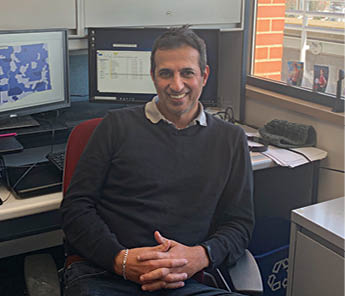interview by Kevin Max
In February, Ofer Amram, an assistant professor at Washington State University Elson S. Floyd College of Medicine, along with colleagues, published data from their research that showed a profound difference in the mortality rates of Washington residents from eastern and western Washington. We caught up with Dr. Amram to distill the results.

What was the impetus for the study?
The study originated in an east-west Washington comparison to examine where there was the greatest need for new medical residents from the College of Medicine. And in eastern Washington, there are far fewer medical residencies. We thought we’d look at different health outcomes to determine where we would have the most impact. We want to locate the new medical program residents where there are poorer health outcomes.
Was there anything that shocked you in the data?
The surprise was the extent to which some of the diseases were worse in eastern Washington. We can look at diabetes, chronic lower respiratory diseases and cerebrovascular diseases as examples where the mortality rates are far greater in eastern Washington than in western Washington.
Talk about the methodology.
We got the data from the Washington Department of Health. We analyzed five years of data, from 2011 to 2016. The interesting thing is that we have the exact location of residency of the people in the study, which will allow us a high resolution. The aim of that mapping exercise was to provide access to the public and policymakers, as well as decisionmakers at the college, to understand where disparities exist in health care and where they want to focus the residents’ efforts.
What are the key findings?
The key finding is that eastern Washington counties suffer from higher mortality rates in all ten of the state’s leading causes of death than western Washington counties. The twenty counties comprising eastern Washington suffer from higher rates of cancer, heart disease, Alzheimer’s disease, unintentional injuries, chronic lower respiratory diseases, stroke, diabetes, suicide, chronic liver disease and flu. Although not in the top ten, overdose-related death is higher in western Washington. Access to care and socioeconomic environment are the major drivers of healthcare access, and access to healthy foods. I think the main thing for us next is untangling the causes behind the higher rates. We want to know why.
How much does poverty play a role?
Poverty plays a primary role in this study. It encompassed many things, including access to health centers, access to insurance, access to transportation and to healthy foods. Poverty, for me, is the key. If you come out of poverty, it can improve many of these factors and, ultimately, your health.
How does this data get used by the WSU College of Medicine?
It will help us identify where to site the new resident programs based on need. It will help us track progress in the health of these communities moving forward—specific diseases and specific locations over time.
Poverty plays a primary role in this study. It encompassed many things, including access to health centers, access to insurance, access to transportation and to healthy foods. … If you come out of poverty, it can improve many of these factors and, ultimately, your health.
— Ofer Amram, assistant professor at WSU Elson S. Floyd College of Medicine






